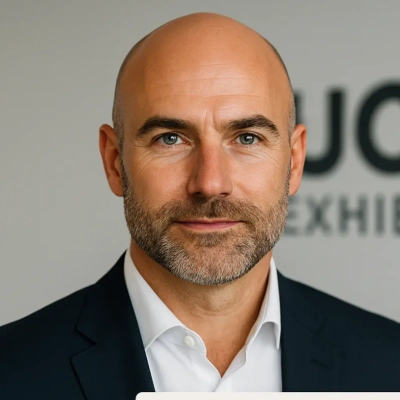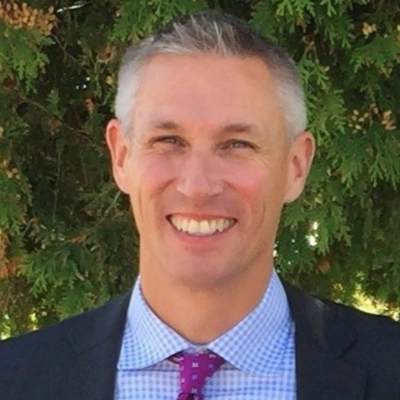23 Challenges Startups Faced in Securing Initial Funding
Gaining initial funding is a critical hurdle for startups, and this article offers concrete insights from seasoned experts to guide new entrepreneurs. It sheds light on the effective strategies that can make or break the quest for financial backing. Learn from those who have successfully navigated these challenges to secure a strong start for their ventures.
- Show Traction and Market Demand
- Develop Proprietary Workflow System
- Shift Pitch to Lessons Learned
- Build an Active Online Community
- Highlight Unique Value Proposition
- Prove Operational Strength
- Showcase Case Studies and Data
- Build Trust Through Early Client Success
- Focus on Results, Not Hype
- Run Lean and Use Cash Flow
- Emphasize Case Studies and ROI
- Leverage Community and Personal Story
- Lead with Data-Driven Innovation
- Target Angel Investors with Relevant Experience
- Prove Unique Approach to User-Centered Design
- Highlight Demand for Affordable Cosmetic Surgery
- Emphasize Community Engagement and Data
- Secure Reliable Service Contracts
- Showcase Impact Through Detailed Case Studies
- Grow Organically Through Personal Referrals
- Present Clear, Well-Researched Business Plan
- Demonstrate Proof of Concept with Data
- Align Vision with Investor Understanding
Show Traction and Market Demand
Securing initial funding for Nerdigital.com was one of the toughest hurdles I faced. The biggest challenge? Standing out in a crowded market while proving long-term viability. Investors weren’t just looking for a great idea–they wanted clear evidence that our business could scale, generate revenue, and sustain growth.
At first, I focused too much on the product itself, assuming its value would be obvious. But what really changed the game was shifting my pitch to emphasize traction and market demand. Instead of just selling the vision, I demonstrated real user interest, early customer wins, and scalable revenue streams.
One key strategy was leveraging pre-sales and customer commitments. We secured letters of intent and even small initial contracts from early adopters. This gave investors tangible proof that people were willing to pay for our solution. Additionally, I refined our financial model to highlight sustainable unit economics–not just projections, but data-backed, realistic growth paths.
Persistence was crucial. I heard plenty of “no’s” before getting a “yes.” But each rejection was an opportunity to tweak the pitch, address concerns, and refine the strategy. Eventually, that persistence paid off.
For founders facing similar struggles, my advice is simple: Show proof, not just potential. Secure early traction, validate demand, and don’t be afraid to pivot your approach based on feedback. Investors bet on momentum–so build it first.
 Max Shak
Max Shak
Founder/CEO, nerDigital
Develop Proprietary Workflow System
Our biggest funding challenge at Property Accounting Co was demonstrating scalability to investors who viewed property management accounting as inherently labor-intensive and difficult to standardize. We overcame this by developing a proprietary workflow system in AppFolio that standardized trust accounting procedures across different property types and jurisdictions. To prove our concept, we offered free financial audits to three mid-sized property management companies, identified consistent reconciliation errors costing them thousands monthly, and implemented our system with quantifiable results. These case studies demonstrated a 62% reduction in accounting hours while improving accuracy, which became our cornerstone pitch. Rather than seeking traditional funding immediately, we leveraged these proven results to secure a revenue-sharing partnership with a property management software company, providing the capital runway needed while validating our model through their established client base before approaching venture capital.
 Narine Masropian
Narine Masropian
Founder, Property Accounting Co
Shift Pitch to Lessons Learned
The biggest challenge I faced in securing initial funding was convincing investors to believe in our vision before we had traction. Early on, we had a bold idea, a strong founding team, and a clear market gap — but no product, no revenue, and no proven demand. Most investors wanted to see validation, not just ambition.
What helped us overcome this was shifting our pitch from what we hoped to build to what we had already learned. We ran pilot interviews, created a basic prototype, and gathered early feedback from potential users. This allowed us to show that we weren’t just selling an idea — we were solving a real, specific problem and already had a roadmap based on data, not guesswork.
We also focused on building relationships before making the ask. Instead of pitching cold, we spent time connecting with angel investors, mentors, and operators in the space — getting advice, asking questions, and earning trust. By the time we formally raised funds, many of them already understood our journey and were more confident betting on us.
The key lesson: early funding is less about perfection and more about momentum. Show that you’re resourceful, that you listen, and that you can execute with limited resources — and people will start to believe you can do even more with their backing.
 Kirill Sagitov
Kirill Sagitov
Founder, coytx global llc.
Build an Active Online Community
Not having proper market validation was one of the biggest issues we faced in getting funded in the early days of The Candida Diet. Investors shied away from investing in a company focused on such a niche market, let alone one focused on a particular health issue like candida overgrowth. We needed to get clever and innovative to counter this. We began to build an active online community through social media, blogs, and forums in which we interacted directly with those who battled with candida. Not only did this help us tailor our solutions to their requirements, but it also indicated a clear need for our solutions. By reading authentic testimonials, success stories, and observing an increasing audience, we were able to demonstrate that a devoted market existed for our offerings.
A second critical strategy was piloting a product line and digital resources on a small scale before seeking larger funding. This enabled us to make money early and collect interpretable analytics data on who our customers are and how predictable they are for our business (what they want, how they consume, how we can keep them happy). Using this data, we created a powerful pitch that showed not only interest but also opportunity in the health and wellness space. By sharing a transparent plan of how the business would grow, as well as the impact we were already generating, we were able to persuade investors who initially had doubts about the business model of our niche.
 Lisa Richards
Lisa Richards
CEO, The Candida Diet
Highlight Unique Value Proposition
The primary challenge I encountered in securing initial funding was persuading investors to invest in a relatively untested business model within a highly competitive market. Numerous investors expressed skepticism regarding the scalability and differentiation of our product, particularly in light of the saturated landscape. To address this concern, I concentrated on developing a compelling narrative that highlighted our unique value proposition and illustrated how our solution effectively addressed a significant market pain point. Additionally, I compiled early customer feedback and proof of concept, which served to demonstrate demand and potential traction. Furthermore, I utilized my professional network to facilitate warm introductions to prospective investors, thereby establishing trust prior to making our pitch. I also articulated our plans for responsible scaling, underscoring our lean operations and cost-effective strategy. By clearly delineating a thoroughly researched growth strategy and exuding confidence in our vision, I successfully secured the necessary funding to advance the business to the next stage.
 Matthew Ramirez
Matthew Ramirez
Founder, Rephrasely
Prove Operational Strength
Honestly, the biggest challenge was convincing lenders that physical infrastructure like trucks, CNC machinery, and raw material stock was a better investment than a slick SaaS pitch deck. Everyone wanted the next digital unicorn. So I stopped selling “what” we were building and leaned into “how” we were operationally bulletproof. I brought one banker into the factory, showed him a single $180,000 machine we owned outright, and ran a timed demo. It cut his hesitation in half—because it made the risk real, measurable, and tied to something tangible. We didn’t just ask for funds—we gave them a front-row seat to how we’d multiply every cent.
You can’t pitch confidence because you’ve got to prove it. Tangible assets beat PowerPoints when you’re asking someone to write a check.
 Rick Newman
Rick Newman
CEO and Founder, UCON Exhibitions
Showcase Case Studies and Data
Securing initial funding for RankingCo came with its challenges, especially proving the effectiveness and scalability of our digital marketing strategies. One of the significant problems was demonstrating how our unique approach could yield measurable results for diverse clientele. We overcame this by showcasing case studies like Princess Bazaar, where we transformed their basic shopping campaign into a smart one, dramatically optimizing ad spend and increasing online sales with a lower CPC.
Investors needed concrete data to see the impact. By restructuring campaigns from branded to category-based, we significantly boosted efficiency and profitability. This strategic tweak not only increased revenues for our clients but proved to investors that our methods could be adapted for various markets and were driven by measurable success.
From these experiences, my advice to those seeking funding is to showcase real-world outcomes and highlight adaptability in your strategies. Demonstrate your understanding of market needs and how your solutions can deliver results under different conditions, just as we did by leveraging AI tools and integrating custom digital marketing services for sustained growth.
 Amber Porter
Amber Porter
CEO, RankingCo
Build Trust Through Early Client Success
Securing initial funding is always a bit like solving a jigsaw puzzle in the dark–it’s tricky and requires feeling your way through. For Spectup, the biggest challenge was convincing investors that our shift from solely pitch deck creation to offering comprehensive startup support wasn’t just another generic service expansion. I remember sitting in a meeting where one investor said, “Why would startups trust a new player in fundraising?” That question stung but was fair. Instead of brushing it off, we tackled it head-on by building a mini case study of early clients who had seen tangible outcomes, like one startup that closed a six-figure seed round within months of working with us.
We leaned heavily into showcasing our experience–I pulled insights from my time at the BMW Startup Garage and Deloitte to highlight our expertise in venture projects and innovation. Another hurdle was differentiating ourselves from larger, more established firms. To overcome that, we capitalized on our agility. Unlike bigger players, we could offer hands-on, tailored support. I’d often jump on calls at odd hours with founders across time zones. By focusing on creating trust and delivering results first, we eventually found the right investors who valued our vision–and the rest fell into place.
 Niclas Schlopsna
Niclas Schlopsna
Managing Consultant and CEO, spectup
Focus on Results, Not Hype
Like many first-time female founders, the hardest part was getting someone to believe in me before there was proof. I quickly realized that painting a big vision wasn’t enough, and that kind of privilege is often reserved for a select few. So I focused on results. I made sales, built traction, and showed that I could create something real. For many women, we have to de-risk ourselves in the eyes of investors before we’re even given the chance to dream big. That’s how I earned belief, not through hype, but through outcomes.
 Vivian Chen
Vivian Chen
Founder & CEO, Rise Jobs
Run Lean and Use Cash Flow
Our biggest challenge in securing initial funding was limited year-over-year growth and a lack of collateral—both red flags for traditional lenders like big banks. We overcame this obstacle by relying less on large outside funding and instead focused on running lean and using our cash flow strategically. We also pursued smaller, more accessible funding sources like lines of credit, business credit cards, and local grants. This piecemeal approach gave us flexibility without overextending ourselves financially.
 Scott Clyburn
Scott Clyburn
Founder and Director, North Avenue Education
Emphasize Case Studies and ROI
In my journey building Fetch & Funnel, one of the biggest challenges in securing initial funding was demonstrating the potential for high impact and measurable results in digital marketing, especially when competition is fierce. What worked was focusing on case studies that showcased significant ROI for our clients. For example, working with Timothy Sykes, we scaled his leads from 638 to 21,200 per month on Google & YouTube, demonstrating over a 3,000% increase. This proved our tactical approach could transform marketing efforts into tangible success.
Emphasizing a clear path to financial freedom and growth through the Fetch & Funnel Method helped investors see the value proposition. For instance, for a client like Mozart Moving, assessing and optimizing their ad spend strategy tripled leads, showing how investing in precise digital strategies can leverage significant profit.
By positioning Fetch & Funnel as not just a service provider but a growth partner, investors saw the strategic action behind our big ideas. Our approach in combining conversion rate optimization with innovative ad strategies proved successful in turning curiosity into conviction among our stakeholders.
 Samir ElKamouny
Samir ElKamouny
Founder & CEO, Fetch & Funnel
Leverage Community and Personal Story
Securing initial funding for Terp Bros was a steep climb, largely due to the skepticism around my background. Having multiple cannabis-related convictions, I faced a tough time convincing investors about my vision. What turned the tables was my dedicated involvement in the community and my track record from past ventures, such as the non-profit I started for construction training and job placement. This illustrated my capability to transform challenges into growth opportunities.
A pivotal moment was leveraging networks I built over the years. By connecting with mentors and local businesses who believed in social equity, I gained not only advice but introductions to potential investors who valued community-driven projects like mine. The CAURD program also played a critical role. It helped legitimize my ambitions and reassured investors with its backing, opening the door to funding crucial for setting up Terp Bros.
The lesson was clear: Using one’s unique story as a strength and building upon trust within the community can attract support, even from seemingly unlikely quarters. Sharing how past challenges fueled my drive for creating social change helped me secure the much-needed backing for Terp Bros.
 Jeremy Rivera
Jeremy Rivera
CEO, Terp Bros
Lead with Data-Driven Innovation
In the early days of Peak Builders & Roofers, the biggest challenge I faced in securing initial funding was convincing stakeholders of the profitability and necessity of integrating advanced technologies like AI-backed project management and drone inspections into traditional roofing services. The industry was resistant to change, viewing these investments as unnecessary or risky.
To overcome this, I focused on gathering data and creating small-scale pilot projects. By initially investing my own funds in AI tools and drone technology, I demonstrated their impact through tangible results. One pilot in Southern California led to an 80% increase in efficiency and a significant rise in customer satisfaction, which caught investors’ attention due to the marked improvement in project delivery timelines and accuracy.
This data-driven approach was crucial. By leveraging concrete examples and case studies that quantified time savings and reduced costs, I was able to secure additional financing from stakeholders who became convinced of our innovative edge in a traditionally slow-moving industry. My experiences underscore the importance of leading with evidence and strategic innovation to secure funding.
 Judah Strausberg
Judah Strausberg
Founding Partner, Peak Builders & Roofers of San Diego
Target Angel Investors with Relevant Experience
When I was trying to secure initial funding for SonderCare, the challenge was that there were so many startups competing for attention, all pitching to the same investors, and many of them had flashier tech or louder stories. We were building something meaningful, but the market wasn’t as glamorous as consumer apps or cryptocurrency. That made it harder to break through the noise.
So instead of casting a wide net, I changed where I looked. I stopped chasing broad VC networks and started looking for angel investors who understood the impact of healthcare at home. I searched on LinkedIn with very specific filters, focusing on people who had experience in elder care, home health, or medical devices.
I didn’t pitch right away. I introduced myself, explained what we were trying to solve, and asked for their perspective. Those conversations were more open and led to meaningful interest. One of those connections became our first investor. He understood the problem on a personal level and believed in the model we were building.
 Kyle Sobko
Kyle Sobko
Chief Executive Officer / Marketing Specialist, SonderCare
Prove Unique Approach to User-Centered Design
Securing initial funding for Webyansh was a significant challenge, mainly due to the need to demonstrate not just a compelling vision but also a concrete understanding of the integration between aesthetics and functionality. One major hurdle was proving our unique approach to user-centered design, particularly within specialized industries like healthcare and AI.
What truly helped us overcome this was a project with Mahojin, where we delivered a visually stunning, yet highly functional, Webflow landing page under a tight deadline. Our ability to implement advanced 3D motion graphics customized to their AI platform impressed investors. By aligning our delivery with Mahojin’s futuristic vision, we showcased Webyansh’s potential to not only adapt to but also pioneer emerging technological trends.
This experience taught me the importance of leveraging our past successes as concrete proof of capability. By demonstrating our proficiency in projects like Asia Deal Hub, where we transformed user journeys with intuitive layouts, I built a stronger narrative around Webyansh’s potential to deliver high-quality and impactful solutions across multiple sectors. This not only secured investment but also established our credibility in a competitive market.
 Divyansh Agarwal
Divyansh Agarwal
Founder, Webyansh
Highlight Demand for Affordable Cosmetic Surgery
Securing initial funding for LUXEVIDA was challenging due to the niche nature of the medical tourism industry and the focus on elective cosmetic procedures. Investors were initially cautious about the market potential and the complexities of coordinating cross-border services. To overcome this, I emphasized the growing demand for affordable cosmetic surgery options and highlighted Colombia’s reputation for high-quality care at lower costs.
I shared data on the significant price differences between the U.S. and Colombia, demonstrating potential savings for clients. For example, clients could save up to 70% on procedures by opting for providers in our network, which appealed to budget-conscious consumers. This helped position LUXEVIDA as a valuable intermediary facilitating access to affordable, high-quality care.
Additionally, I leveraged testimonials from clients who experienced life-changing changes and smooth logistical processes facilitated by LUXEVIDA. These stories illustrated the tangible benefits for clients and underscored the operational efficiencies we’d implemented in our concierge services, which were pivotal in gaining investor confidence. By focusing on client satisfaction and operational excellence, I was able to secure the funding needed to scale and improve our offerings.
 Ana Tredrea
Ana Tredrea
President, LUXEVIDA
Emphasize Community Engagement and Data
As someone who ventured into the cannabis industry with RNR Dispensary in Bushwick, Brooklyn, securing initial funding was a formidable challenge mainly due to the complexities of cannabis regulations and the need to establish trust with investors in a nascent market. My approach was to emphasize the unique value proposition of RNR as not just a dispensary but a community hub. I showcased our concept of integrating cannabis retail with local cultural events and art, which resonated well with both financiers and the community.
One key strategy was leveraging my background as a community leader and firefighter to build credibility and trust with potential investors. By highlighting our successful partnerships with local artists and unique initiatives like the “Creative Cannabis Mixer,” I was able to demonstrate our commitment to fostering community engagement and cultural improvement. This approach impressed upon investors that RNR was not just a commercial venture but a catalyst for community growth and innovation.
Another pivotal step was using data-driven strategies to assure investors of our business’s sustainability. Implementing HR analytics allowed us to optimize training, improving both employee performance and customer satisfaction—metrics I shared with investors to underline the strength of our operational model. This data-centric tactic, coupled with our community-driven approach, ultimately helped secure the necessary funding to bring RNR Dispensary to fruition.
 Ronald Shen
Ronald Shen
Co-Founder, RNR Dispensary
Secure Reliable Service Contracts
Investors doubted quick customer acquisition. That was the main roadblock when I first sought funding. They weren’t convinced I could bring in steady work fast enough to make the business sustainable early on. Their concern wasn’t the quality of the service or the size of the market; it was whether I’d be able to demonstrate consistent demand soon after launch. Without some form of predictable income, they viewed it as too risky.
What turned that around was securing a service contract with a property management firm. It provided us with a reliable pipeline of ongoing electrical work, covering maintenance, inspections, and urgent repairs across multiple buildings. That agreement demonstrated that there was a built-in flow of jobs already secured, which gave investors the confidence they needed. They no longer needed to gamble on future leads because the revenue was already on paper.
 Daniel Vasilevski
Daniel Vasilevski
Director & Owner, Bright Force Electrical
Showcase Impact Through Detailed Case Studies
One of the foremost hurdles when getting Festoon House off the ground was demonstrating the scalability of our idea to potential investors. The outdoor lighting market has many players, so convincing people that we had a unique offering and a solid plan to capture a significant piece of it required effort.
What became clear was the necessity of showing, not just telling. Numbers and projections are important, but they don’t always ignite the imagination. I created detailed case studies showcasing the impact our commercial-grade lighting had on various businesses. These studies underscored improvements in ambiance, customer attraction, and energy savings. Demonstrating a clear return on investment proved persuasive.
Another key element was transparency. Early on, I made sure to have very open conversations about the challenges we anticipated and how we planned to address them. No business is without its risks, and pretending otherwise is a quick route to losing credibility. By openly addressing potential issues and showing we had thought through contingency plans, we helped assuage investor concerns.
Networking proved extremely valuable. I actively sought out mentors and advisors who had experience in securing funding for similar ventures. Their guidance on crafting our pitch and navigating the funding landscape was invaluable. Don’t underestimate the power of a strong support system!
 Matt Little
Matt Little
Owner & Managing Director, Festoon House
Grow Organically Through Personal Referrals
Securing initial funding was a challenge primarily due to the niche nature of providing therapy for English-speaking expats in Barcelona. With limited resources, I had to carefully strategize without relying on external funding. I started with a minimalistic approach—no extensive marketing, just a basic website and word-of-mouth, which allowed the practice to grow organically.
As a psychologist and expat, I tapped into personal experiences and the clear demand in Barcelona for mental health services catered to expats. My client base initially grew through personal referrals and community involvement, which demonstrated a clear market need to potential collaborators.
By 2018, when demand surged and more therapists sought to join, I decided to expand. Instead of seeking traditional funding routes, I used the increased client inquiries as leverage to secure favorable terms on a new office space, persuading others of the venture’s sustainability with tangible data: our client sessions increased to over 9,000 annually by 2024.
 Leigh Matthews
Leigh Matthews
Founder, Therapy in Barcelona
Present Clear, Well-Researched Business Plan
The biggest hurdle I faced in obtaining initial funding was convincing investors to believe in my vision when we had no proven track record or traction yet. As a first-time entrepreneur, I struggled to demonstrate that our business idea had potential without the data to back it up. Many investors were unwilling to take a chance on a startup with no history or major customer base.
To overcome this, I focused on presenting a clear, well-researched business plan that outlined the market opportunity, our unique value proposition, and a clear growth roadmap. I leveraged personal connections and shared my own commitment and passion for the project. I worked on building relationships with angel investors who were more willing to take risks on early-stage companies. I also looked for smaller funding rounds to get the ball rolling so we could show early results and gain credibility with future investors.
In hindsight, I learned that persistence and building relationships with investors are key. Even without the perfect track record, showing them your vision, commitment, and a path to scalability goes a long way in securing that initial funding.
 Nikita Sherbina
Nikita Sherbina
Co-Founder & CEO, AIScreen
Demonstrate Proof of Concept with Data
When securing initial funding for Rocket Alumni Solutions, the biggest challenge I faced was convincing potential investors that a digital donor recognition platform had substantial market potential. Coming from an investment banking background, I knew the importance of a clear ROI projection. By leveraging data from early pilot programs, where our personalized recognition displays increased repeat donations by over 25%, I showcased a compelling narrative that spoke to our product’s effectiveness and scalability.
A key to overcoming this hurdle was demonstrating proof of concept with data-backed results. One of our partner schools saw a 40% increase in new donors who first heard about their program through our interactive displays. This not only highlighted our ability to create compelling touchpoints for donor engagement but also provided investors with tangible evidence of our platform’s impact and reach.
I also prioritized aligning our vision with prospective investors’ interests. By painting a detailed roadmap, complete with milestones, we were able to articulate the growth trajectory and instill confidence. This transparent communication strategy was crucial in securing initial investments and fostering ongoing support, enabling us to scale our solutions to more schools and nonprofits.
 Chase McKee WF
Chase McKee WF
Founder & CEO, Rocket Alumni Solutions – Wall of Fame
Align Vision with Investor Understanding
In securing initial funding for MergerAI, the biggest challenge was aligning the vision for AI-driven M&A tools with investor understanding. My experience at Adobe taught me the importance of simplifying complex integrations, which I applied by creating a prototype that demonstrated how our platform reduces integration time by 30%. This concrete figure provided a compelling value proposition that resonated with investors.
Leveraging data from the prototype, I was able to showcase case studies illustrating time and cost savings during M&A integrations. Highlighting examples where AI optimizes integration processes convinced stakeholders of the potential market impact. These efforts aligned well with my track record in effectively managing large-scale post-merger integrations.
I found that engaging investors with a clear narrative and demonstrable outcomes was crucial. By backing up our claims with specific metrics and examples from my Adobe experience, we were able to secure the necessary support to launch MergerAI. This approach not only addressed funding challenges but also set the stage for MergerAI’s growth.
 Ernie Lopez
Ernie Lopez
Founder & CEO, MergerAI

